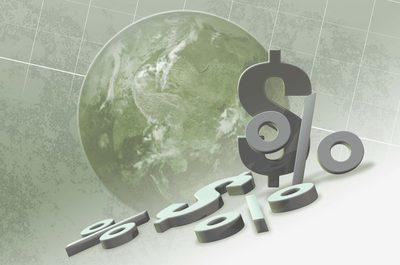The operating lever (or, as it is also called, operating liverier) is one of the main economic indicators. It not only provides an opportunity to assess the current situation, but is also actively used in forecasting. Perhaps the most important operational leverage is in the context of identifying economic risks in a particular period.
Operating Lever - Definition
There are many different criteria by which you can determine the economic condition of an enterprise. So, the operating leverage is an indicator that demonstrates the dependence of the dynamics of changes in the rate of profit on revenue. An important role here is played by such a concept as the break-even point, which denotes the minimum amount of revenue that covers all production costs. It is also worth considering the factors that affect the dynamics of the second indicator. These can be both price fluctuations and changes in the volume of demand.
The concept of operating leverage is inextricably linked with the share of fixed costs in total production costs. This is what determines the sensitivity of the size of profit to the revenue indicator. Lower fixed costs the more active the dynamics of the first value in relation to the second.

Features of the operating lever
An indicator such as an operating lever is characterized by a number of distinctive features. Among them, it is worth highlighting the following:
- To determine the effect of operational leverage will only be appropriate if the organization in its activities has stepped over the breakeven point. This can be explained by the fact that, regardless of the amount of income received, the company is obliged to pay off expenses that are constant.
- As the volume of sales of products and, consequently, revenue increases, the significance of operating leverage gradually decreases. Since the company has already surpassed the zero (break-even) level, profit with the growth of income will also continuously increase. And vice versa.
- The relationship between profit and operating leverage is the opposite. Thus, we can say that this indicator in some way aligns the values of profitability and risk.
- The effect of operating leverage is valid only for the short term. This can be explained by the fact that fixed costs are gradually changing due to tariff fluctuations and other factors.

Techniques for reducing fixed costs
In order to reduce the share of fixed costs in their total amount, the following techniques can be used:
- reduction in the cost of maintaining the administrative apparatus;
- the sale or leasing of equipment that is idle in order to reduce depreciation and maintenance costs;
- in order not to burden the budget with a large amount of expenses, it is possible to lease production machines;
- saving resources and reducing utility bills.
How to save on variable costs
Since variable costs also affect the final indicator of operating leverage, some measures should be taken to reduce them in production:
- staff reduction due to automation of all processes or increase labor productivity in other ways;
- rationalization of warehousing by reducing stocks, which will reduce the cost of their storage and maintenance;
- revising the logistics system in favor of more profitable supply methods.
Leverage calculation
It makes it possible to evaluate the change in profit as a percentage for fluctuations in costs and revenue, such an indicator as operating leverage. Its formula is the ratio of marginal profit to profit, which was received before deducting the corresponding interest payments. We can say that this is a characteristic of the change in profit for each percentage point of increasing sales.
There is another way in which the operating lever can be calculated. The formula will be valid for those enterprises that produce a wide range of items. So, this indicator is calculated as the ratio between:
- the difference in revenue and variable costs;
- the difference in revenue, variable costs and fixed costs.
If the head of the enterprise fully understands the mechanism of action of this indicator, then he has the ability to manipulate costs in order to increase the value of the profit indicator.

Operating Lever Properties
This indicator has the following properties:
- the impact and size of the operating leverage are directly proportional to fixed costs and inversely proportional to variables;
- the highest indicator of operating leverage is when the sales volume of products is close to the breakeven point (this indicates a high level of risk);
- in spite of the fact that the low value of the operational leverage is characterized by a small risk, it is worth noting that significant profit in this case also should not be expected.
Leverage
The strength of the impact of operating leverage depends on what is the share of fixed costs in the total costs of the enterprise. This is one of the most important indicators, according to which the level of risk of entrepreneurial activity can be determined. It reflects fluctuations in profits depending on sales and income. To determine this indicator, you must first calculate the marginal income.
The strength of the operating leverage is determined based on the specific quantity of products produced. So, you can determine the risk of losing profits due to differences in sales. We can say that the strength of the operating leverage and the probability of incurring losses are directly proportional.
The calculation of the indicator of operating leverage is an objective necessity for conducting a qualitative analysis of the enterprise. It will allow you to timely identify all the risks and shortcomings in the organization of sales in order to minimize the likelihood of financial losses and bankruptcy.

Leverage Options
There are several options according to which this indicator can be calculated. Thus, the operating lever is equal to:
- the ratio of fixed and variable costs, which significantly affects the profitability of the enterprise;
- the ratio of the rate of change of retained earnings to the volume of sales of commercial products;
- the ratio of profit to a constant category of expenses.
It is worth noting that an increase in the assets of the enterprise due to the receipt of any additional funds always provokes an increase in the operating liverier.

How does the operating lever
The impact of operating leverage reflects entrepreneurial risk. In the case when this indicator is high, for each percentage reduction in the amount of revenue there is a significant decrease in profit. it is also important to consider the impact of fixed costs. So, in the case when the operating leverage is high enough for large enterprises, they should be careful.With the slightest fluctuation in the economy, the solvency of customers will decrease sharply, and the level of fixed costs will remain at the same level or even increase.
The impact of operating leverage must be evaluated at all stages of the product life cycle. This will allow timely response to changes in the economy. Thus, management will be able to manipulate fixed and variable costs in order to bring the operating leverage to the optimal level.

The calculation of the effect of the operating lever
The basis of this indicator is the ratio of fixed and variable costs in relation to the size of the financial result. It is worth noting that profits and revenues vary differently due to the availability of mandatory payments for utilities, depreciation, and so on. We can say that the financial result will be more dependent on the level of income, the higher the fixed costs.
For all of the above, operating leverage is equal to the ratio of profit growth to revenue growth. The indicator calculated in this way helps to predict the financial result depending on fluctuations in the amount of income and fixed costs.

Economic sustainability of the enterprise
Any effective manager must be familiar with the methods of calculating operational leverage in order to be able to assess the economic sustainability of the enterprise and have an impact on it in time. This technique allows you to assess the situation accurately promptly without the preparation of detailed reports. There is an opportunity to adjust the volume of sales and the level of costs in order to maximize profits. In this context, the following factors must be considered:
- despite the fact that fixed costs can move the breakeven point, their change does not have any effect on marginal profit;
- variable costs not only change the breakeven value, but can also have a significant impact on profit;
- if the change is different types of costs happens at the same time, then the zero level will shift significantly by breakeven chart;
- pricing has a significant impact on marginal profit.
Key Assumptions
In calculating the operating leverage, as well as in conducting an appropriate analysis of production, the following basic assumptions are used:
- all costs of the enterprise can be clearly divided into fixed and variable (in some cases, managers resort to an approximate classification);
- the company is engaged in the production of one type of product (if products are manufactured in assortment, then it should not be changed throughout the entire reporting period);
- both costs and revenues should directly depend on the volume of production;
- at the end of the reporting period, stocks of finished products should not remain (they should be sold in full);
- all indicators, except the scale of production, should remain constant, or their scatter of their values over time should be insignificant (this applies to the level of prices, labor productivity, assortment component, and so on);
- operational analysis is applicable only for a short-term period (not more than a year), during which fixed costs do not change significantly.
What does the indicator reflect
The operating lever gives an idea of the following points in the activities of the enterprise:
- the level of economic efficiency for a specific sales indicator (in this regard, you can plan the volume of sales that allows you to achieve the desired size of marginal profit);
- determination of sales volumes that will ensure full coverage of all production costs (meaning the break-even level is reached);
- the formation of financial strength reserves in accordance with the indicator of economic risk;
- the impact of each individual enterprise performance indicator on the final profit level.
A full-fledged operational analysis allows you to deeper study the features of the enterprise. In addition, it makes it possible to quickly respond to changes in the internal and external environment in order to reduce the risk of economic losses.
Main conclusions
The role of financial leverage in the analysis of the activities of a manufacturing enterprise cannot be underestimated. This indicator helps to establish a clear relationship between profit and income, as well as the main types of costs. This helps management to quickly respond to certain changes in the internal or external environment in order to avoid significant financial losses. Another important point in the calculation of operating leverage is its relationship with the level of economic risk. It will be the higher, the more significant the leverage will be. Typically, the maximum value is observed in cases where the sale of products is approximately equal to the break-even level.








